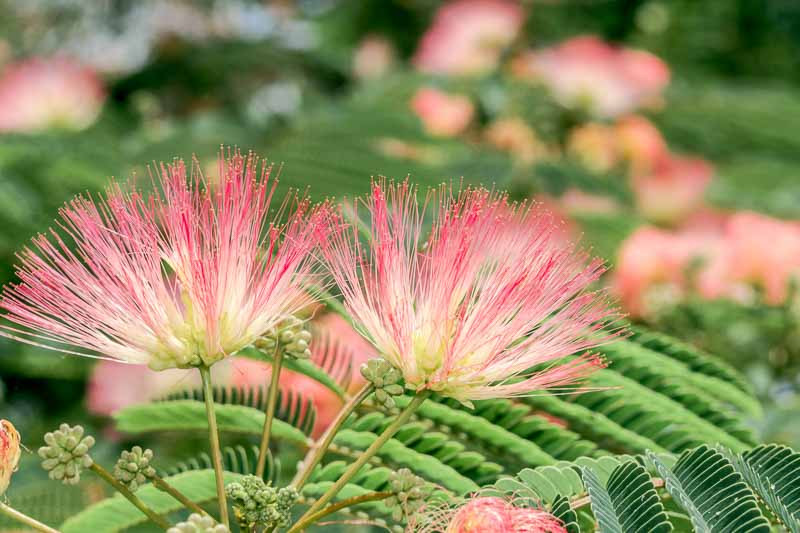Albizia (Mimosa Tree)
Albizia, commonly known as Silk Tree or Mimosa Tree, is a genus of fast-growing deciduous or semi-evergreen shrubs or trees. They are prized for their beautiful, feathery foliage and spectacular, fluffy pink or white flowers.
Habit: Albizia species generally display an umbrella-like growth habit, with mature trees reaching 20 to 80 feet (6-24 meters) in height. They exhibit fern-like, bipinnate leaves, which close at night or during rain – an attribute that’s given them the name “sleeping tree.”
Hardiness: Albizia is hardy in USDA zones 6-9, with some species tolerating temperatures down to -10°C (14°F). These trees prefer full sun and well-drained soil but can adapt to various soil types.
Flowers: Albizia trees are famous for their striking flowers that appear in late spring or early summer. The blossoms are typically pink or white, with numerous stamens that give them a fluffy, silk-like appearance.
Uses: Albizia trees are a great choice for large gardens and parks, used as ornamental shade trees. Their flowers also attract bees, butterflies, and hummingbirds, adding to their garden appeal.
Benefits: Beyond their ornamental value, Albizia trees offer environmental benefits. They’re known for their ability to fix nitrogen, thereby improving soil fertility. In traditional medicine, certain species are used for their therapeutic properties. The bark, leaves, and flowers of Albizia julibrissin, for instance, are used in Chinese medicine to calm the spirit and relieve anxiety and insomnia.
However, gardeners should note that Albizia species can become invasive in certain regions due to their prolific seed production and quick growth. They may also be susceptible to mimosa wilt, a soil-borne fungus. These potential drawbacks should be considered before planting. Despite these, Albizia trees can bring a unique tropical feel to a garden with their delightful foliage and enchanting blooms.

